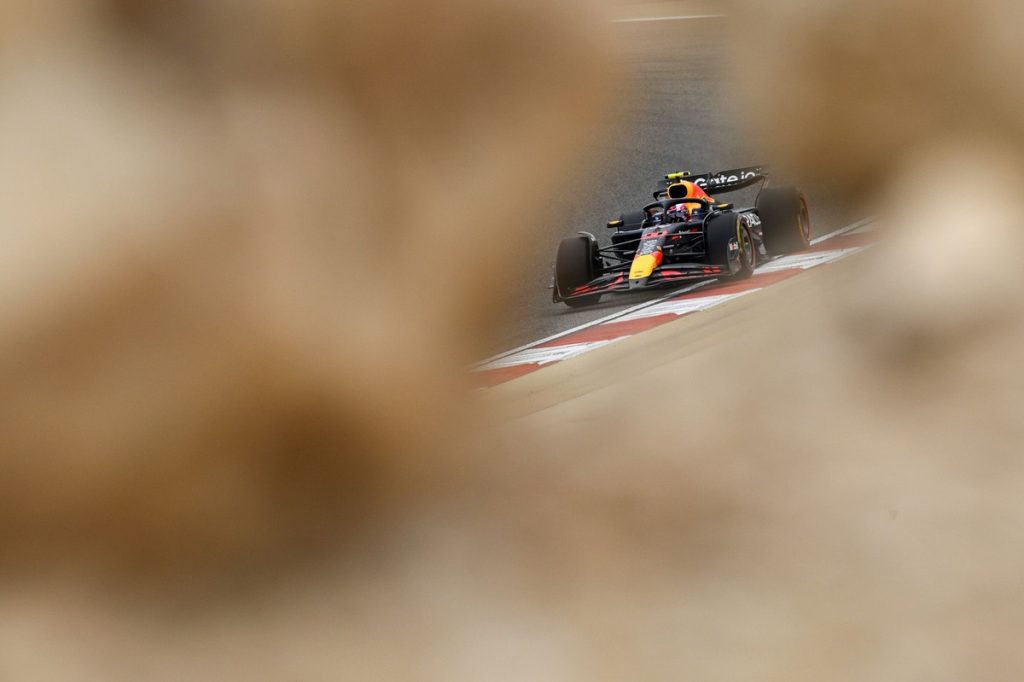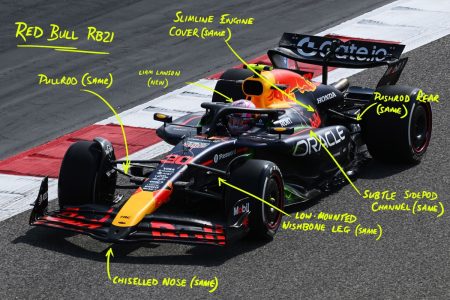Rain Dampens F1’s 2025 Pre-Season Test in Bahrain
Formula 1’s 2025 pre-season test in Bahrain faced another logistical challenge on Thursday, just a day after a power cut at the Sakhir track disrupted the first day of testing. The weather, unusually gloomy and wet for the region, left most teams unable to run their cars safely, with only Aston Martin and Haas equipped with the necessary intermediate tyres. The rain, which began as a steady drizzle, intensified around 90 minutes into the first session, forcing the teams to use wet-weather tires—a resource that was in short supply among the majority of the paddock.
The Impact of the Rain
At 1000 local time, when the session started, the rain was light enough for teams to use their dry-weather tires, or "slicks." However, as the rain became heavier, only Aston Martin and Haas, who had brought intermediate tires, were able to continue testing safely. Aston Martin had three sets of intermediates, while Haas had one set of intermediates and one set of extreme wets. This left the other teams with no choice but to wait for the rain to lessen, a delay that lasted about an hour, significantly cutting into the limited testing time available. Teams have only three days to get their new cars race-ready, and such delays can have a profound impact on their preparedness for the upcoming season.
Historical Context and Tyre Choices
In previous years, Bahrain hosted the season-opening race, which meant that a full set of wet and intermediate tires was available for the teams to use during testing. However, for the 2025 season, the first race is in Australia, and the wet-weather tires for that race are already in the country, not Bahrain. This year, teams were given the freedom to choose how to allocate their 35 sets of Pirelli tires for the test, choosing between dry and wet-weather options. Pirelli boss Mario Isola explained the situation to Autosport, emphasizing that the teams made their choices knowing the risks involved. “In the past, Bahrain was the first race of the year, and that means that we had also the wider [set of wet weather] tyres that we brought for the race, available here,” Isola said. “But this year, the first race is Australia. And so, when we give the freedom to the teams to decide on their 35 sets of tyres, they have the freedom to take any wet, intermediate, whatever they want.”
Teams’ Decision and Consequences
The teams who opted not to bring intermediate or wet tires made their decision based on the historical low probability of rain in Bahrain. Isola noted, “Knowing that, because the tyres for the race are in Australia and not in Bahrain, if they decided not to take an intermediate and wet, they knew already that in case of rain conditions they could not run. They took the decision and we respected the decision. It’s their choice.” This decision has now left a majority of the teams, including top contenders, at a disadvantage as they scramble to make up for lost testing time. The rare weather conditions have highlighted the importance of contingency planning in such critical events.
Haas and Aston Martin: The Only Teams Running
During the mid-morning lull, Haas’s Esteban Ocon briefly circled the track on the team’s intermediate tires, providing a rare glimpse of action amid the otherwise quiet session. Ocon’s laps were crucial, not just for Haas but also for Pirelli to gather data on the behavior of intermediate tires in heavy rain. Aston Martin’s decision to bring three sets of intermediates also paid off, allowing them to continue their testing program relatively unscathed. This contrast in preparedness underscores the varying strategies and risk assessments among the teams, with some prioritizing all-weather readiness over focusing solely on dry conditions.
Looking Forward: The Importance of Early Testing
The significance of these pre-season tests cannot be overstated. With the F1 season set to kick off in a little over a month, every lap and every minute of data collection is precious. The delays and logistical issues in Bahrain have already caused disruptions, and teams are now under increased pressure to maximize their remaining testing time. The weather conditions, while unfortunate, have provided a unique opportunity to test the cars and tires in unexpected scenarios, which could prove invaluable when facing unpredictable weather in future races. As the teams prepare for the remaining days of testing, the focus will be on making the most of the time available, adapting to the challenges, and ensuring their cars are in optimal condition for the season ahead.
Conclusion: Adaptability and Preparedness in F1
The 2025 pre-season test in Bahrain has been a test of adaptability and preparedness in more ways than one. The power cut on Wednesday and the rain on Thursday have challenged the teams’ logistical planning and highlighted the importance of considering all possible scenarios when preparing for such critical events. While the majority of teams were caught off guard by the weather, those who brought intermediate tires, like Aston Martin and Haas, have shown the benefits of being well-prepared. As the teams move forward, the lessons learned from these unexpected challenges will undoubtedly influence their approaches to future testing and race preparations, ensuring they are better equipped to handle any situation that comes their way.











